Traffic calming measures are intended to slow traffic and discourage cut-through in residential neighborhoods, with the goal of enhancing pedestrian safety and improving neighborhood livability. Traffic calming features may also contribute to the aesthetic quality of the streetscape.
Process Overview
The SFMTA manages San Francisco’s traffic calming program.
The SFMTA is currently in the process of revising the traffic calming process – check back soon for more information.
Currently, the SFMTA has a detailed process to identify, design, and construct traffic calming projects, consisting of the following steps:
- Request: Neighbors may submit a traffic calming request application to the SFMTA. The request requires multiple signatures from neighborhood residents.
- Prioritization: The SFMTA will review the traffic calming request, and evaluate it to see if traffic calming measures can solve the stated problems. If the application is accepted, SFMTA staff will then rank applications in order of priority, based on several factors, such as speeding data, collision history, proximity to schools, etc.
- Planning: During the Planning phase, SFMTA staff works with the neighborhood to develop and build consensus around conceptual traffic calming improvements. The public process typically includes one or more public meetings.
- Implementation: The SFMTA develops detailed designs, receives necessary permits and approvals, seeks funding, and builds the project as funding allows (often in phases). In many cases, designs will change from the Planning to Implementation phases, as constraints such as underground utilities are identified. Depending on the scope of the project, the project may require an SFMTA public hearing, SFMTA Board action, or Board of Supervisors legislation.
In some cases, certain traffic calming features, such as curb extensions, may be built by public or private entities without going through the City’s formal traffic calming process. See individual traffic calming pages for more information.
See Permit Process
Building Neighborhood Support
Traffic calming impacts a larger number of people, and requires significant neighborhood support. Although the SFMTA will reach out and conduct public meetings with residents in the area being planned, it is also beneficial for the applicants to reach out to their neighbors in order to better understand differences of opinion and find common ground.
See Building Neighborhood Support
For more information on traffic calming, see the SFMTA’s traffic calming website
Official Codes & Documents
- SFMTA Traffic Calming Guidelines
- Better Streets Plan (street design guidelines)
Design Guidelines
See related pages for traffic calming measures:
- Chicanes
- Curb extensions
- Curb radius changes
- Medians and islands
- Raised crosswalks
- Speed humps
- Traffic calming circles
General Guidelines
Traffic calming features should follow SFMTA’s existing Traffic Calming Guidelines. In some cases, they may incorporate landscaping, stormwater treatment, and public space uses.
Traffic calming features should be compatible with transit operations, and support access for pedestrians, bicyclists and persons with disabilities.
Any traffic calming enhancements should be designed to retain emergency vehicle access, while still serving to slow general vehicle movement.
Where raised traffic calming features such as curb extensions will be added, they should be reviewed by DPW Hydraulics to ensure that there is sufficient hydraulic capacity within the street cross-section. Stormwater features can help to offset reduced capacity.
Maintenance
Maintenance Responsibilities
The City typically maintains traffic calming features, unless there is a maintenance agreement in place with surrounding neighbors. In some cases, the SFMTA will work with the neighborhood to develop a maintenance agreement for certain features, such as landscaping.
With some exceptions, fronting property owners are responsible for the on-going maintenance and upkeep of sidewalk paving as well as all sidewalk elements directly fronting their property, such as trees, landscaping, and streetscape furnishings. Generally, the City is responsible for maintaining roadway paving and other features in the roadway, such as medians.
For a more detailed description of maintenance responsibilities, see Maintenance.






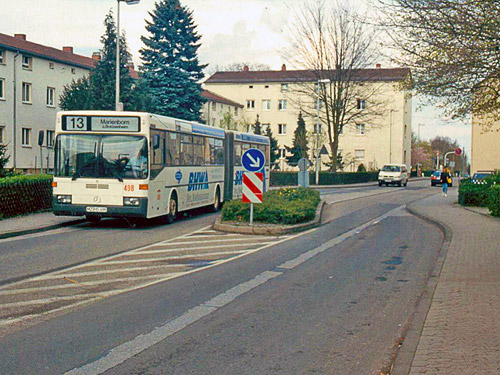
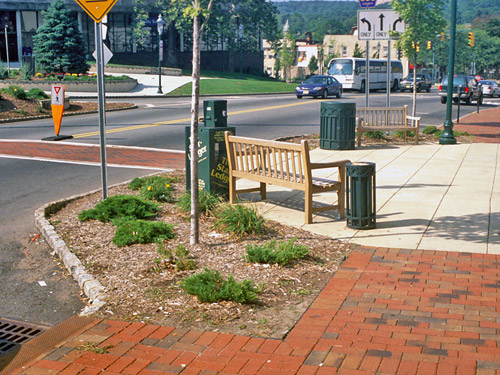
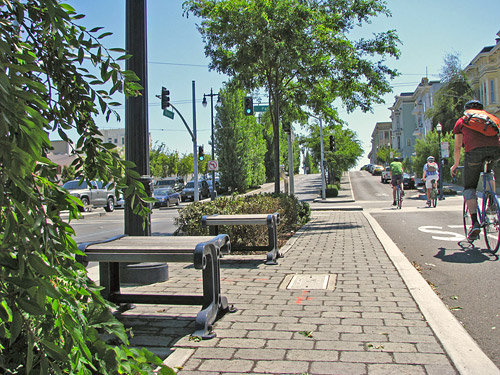
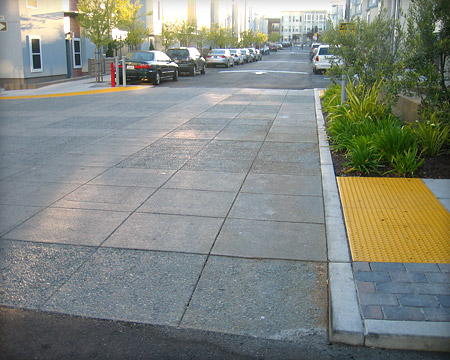
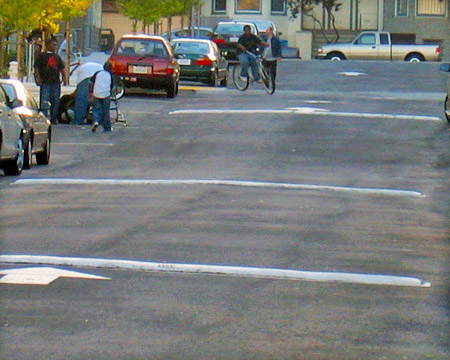
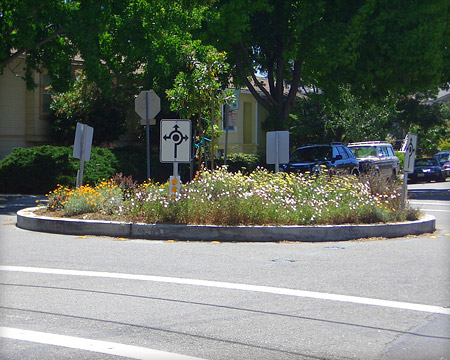
 Copyright © 2015
Copyright © 2015